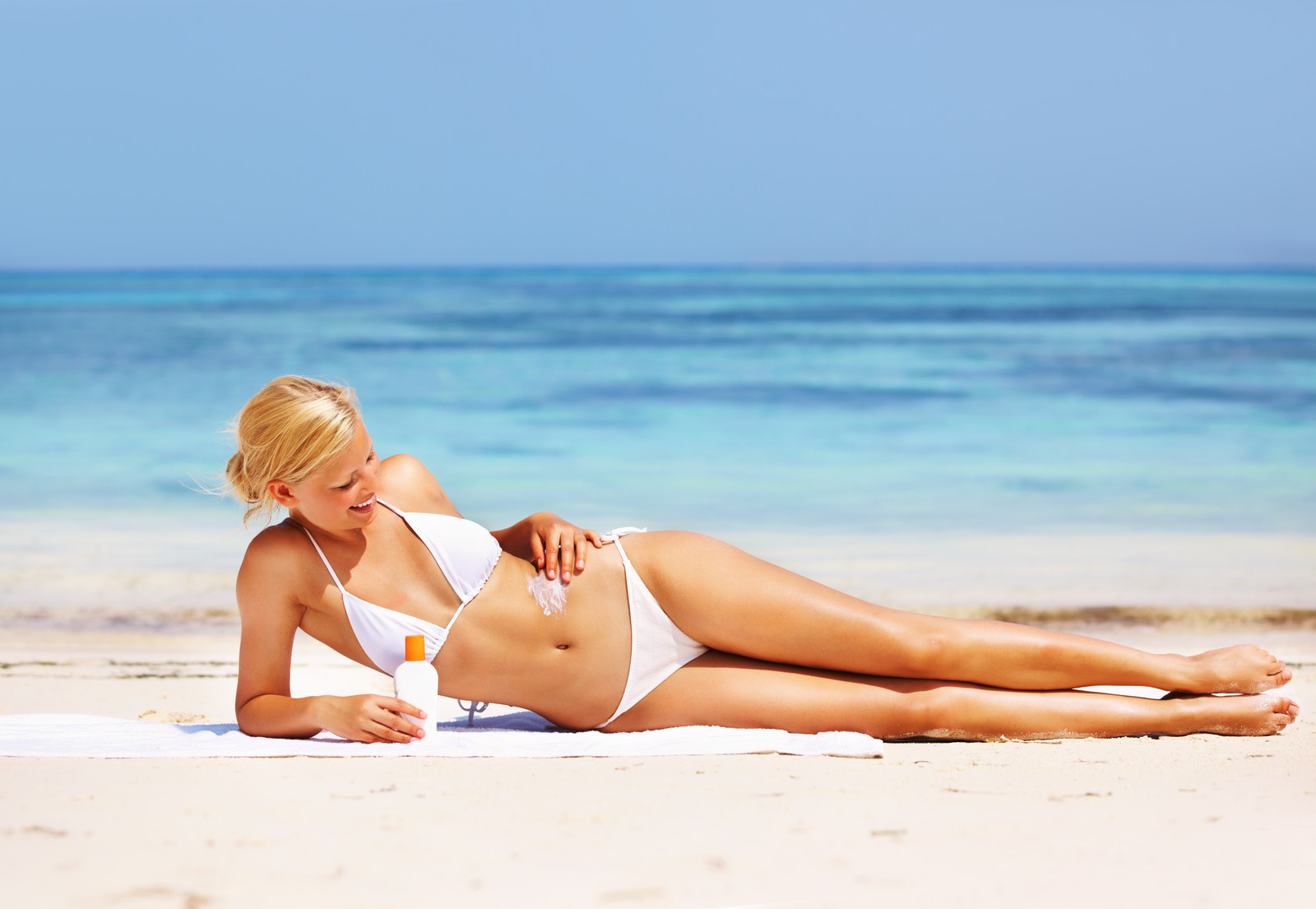Sunscreen products
Sunscreen products on offer today are increasingly challenged by a far more savvy, knowledgeable consumer than just 5 years ago.
Related topics
Face sunscreen
Best sunscreen
Titanium dioxide
Sunscreen ingredients
Mexoryl sunscreen
Sunscreen for children
Sunscreen for babies
Sensitive skin sunscreen
How does sunscreen work?
History of sunscreens
Spray sunscreens
zinc oxide
Sunscreen has been around since the 1950's when sun tanning came into its own and was promoted as a fashionable, even healthy thing to do, based on going out into the sun specifically to obtain a sun-kissed, bronzed skin tone.
However, seeking sun protection for other reasons include various cultures dislike of a darkened skin so they like to maintain their natural pale complexion.
Both reasons for use demand effective, adequate protection from the suns' rays for their skin, without using any toxic, harmful ingredients.
Sunscreen products for a Sexy image?
Many people, especially the younger generations, still consider a tanned skin to project a slim and sexy look, alongside a healthy lifestyle. Much of the "tanned look" is also associated with the elite and wealthy, who are projected in outdoor leisure activities, sunning it up on 'super yachts', snow skiing down the alps, or indulging in fun outdoors activities in the sunshine.
Some quotes about what it means to have a tan:
"I LOVE having a tanned body. I feel so much prettier and I even like the little freckles on my face. And it covers my cellulite! I always tan in the sun, I just don't like a fake tan. But I’m also blessed with an olive skin, so I tan easily.”
"I used to tan outdoors in the sun all the time, BUT as I am not able to tan naturally, now I’m covered in freckles. This summer I reckon I'll try getting a fake tan.”
“I like the feeling of being tanned. I also don't wear much makeup when I'm tanned and it even makes my tuned muscles stand out more. I prefer tanning outdoors in the sunshine and enjoy feeling sexy on the beach.”
 Embracing the sunshine requires use of sunscreen products
Embracing the sunshine requires use of sunscreen productsHowever, opinions have changed radically in this relatively short space of time to believe that the sun's ultraviolet rays (UV rays) are extremely harmful. So, having started out as a popular belief that the sun's rays were a good thing; to being very bad for your health; to being a very healthy source of Vitamin D; sunscreen products today are quite varied in their offerings.
In general, many focus on providing 'adequate protection' by providing both UVA and UVB protection, which is otherwise referred to as 'broad spectrum protection'.
However, there are only a few UV-filters available that will screen UVA rays efficiently. UVA wavelengths penetrate more deeply into the skin than the UVB. In fact they can penetrate all the way into the dermis where collagen exists. The only filters that provide efficient protection for UVA are Zinc Oxide, Titanium Dioxide or Avobenzone. But when you look at the detail, zinc oxide out-performs them all.
However, more and more, the sunscreen product manufacturers are being pushed by popular demand, to provide a product that not only provides adequate protection, but also does not contain any harmful ingredients. In this respect, zinc oxide is by far the most recommended 'healthy' options for UVA protection.
Sunscreen products with Antioxidants
Beyond this, much research has focused on adding botanical ingredients such as antioxidants that will help prevent skin cancer and keep skin firm and young looking.
Ultraviolet radiation is believed to cause several forms of skin cancer, including basal cell carcinoma and squamous cell cancer. However, many important questions still remain, such as in which layers of the skin, and in which parts of the skin cells, the real damage actually occurs.
Sunscreen products with a sun protection factor of 15 can block up to 94 percent of the ultraviolet light, but the residual light that does penetrate the skin can create free radicals - highly reactive molecules that can weaken or destroy cell membranes. Free radicals can also damage DNA, create age spots and wrinkles, and depress the immune system, increasing the risk of skin cancer.
Research done by using a two-photon laser fluorescence-imaging microscope to study the effects of ultraviolet radiation on free radical generation and the role this plays in skin damage, involves taking images of the skin at varying depths after ultraviolet exposure, looking for fluorescent tags that will reveal the presence of free radicals. It also reveals any resulting damage in the actual skin cells.
Using the technique, it was found that the stratum corneum - the skin's main protective barrier against environmental assault - generated a tremendous number of free radicals when exposed to ultraviolet light. These free radicals were believed to cause considerable damage to both the cytoplasm and the lipid matrix, as well as dramatically damaging the cytoplasm of the lower epidermis.
So, while the majority of sunscreens offer no protection against free radical damage, the addition of antioxidants is believed to be able to significantly reduce the generation of free radicals. Thus, increasingly, sunscreen products will not only have protection against UVA and UVB rays, they will contain antioxidant ingredients.
Sunscreen products with Vit C and E
Of all the potential antioxidants, vitamin C is believed by many to be the best quencher of free radicals. There are natural enzymes in your skin that cleave the phosphate group and form a reservoir of vitamin C. After multiple applications of the antioxidants, a significant amount of vitamin C accumulates within the skin. Any free radicals that are generated in the skin, by sun action or otherwise, will be quenched by the vitamin C stored within your skin.
However, when combined with Vitamin E it is more powerful as they activate each other. If one has been oxidised by a free radical the other can restore the capability of being an antioxidant. ie. Vit E removes the oxidant.
Due to the trend for more antioxidants being used in cosmetics, and the resultant research being applied by the various cosmetic houses, some antioxidants have been highlighted for use in cosmetics as being many times more powerful than Vit C.
Future trends will definitely see more of these ingredients being used.






New! Comments
Have your say... please leave me a comment in the box below.